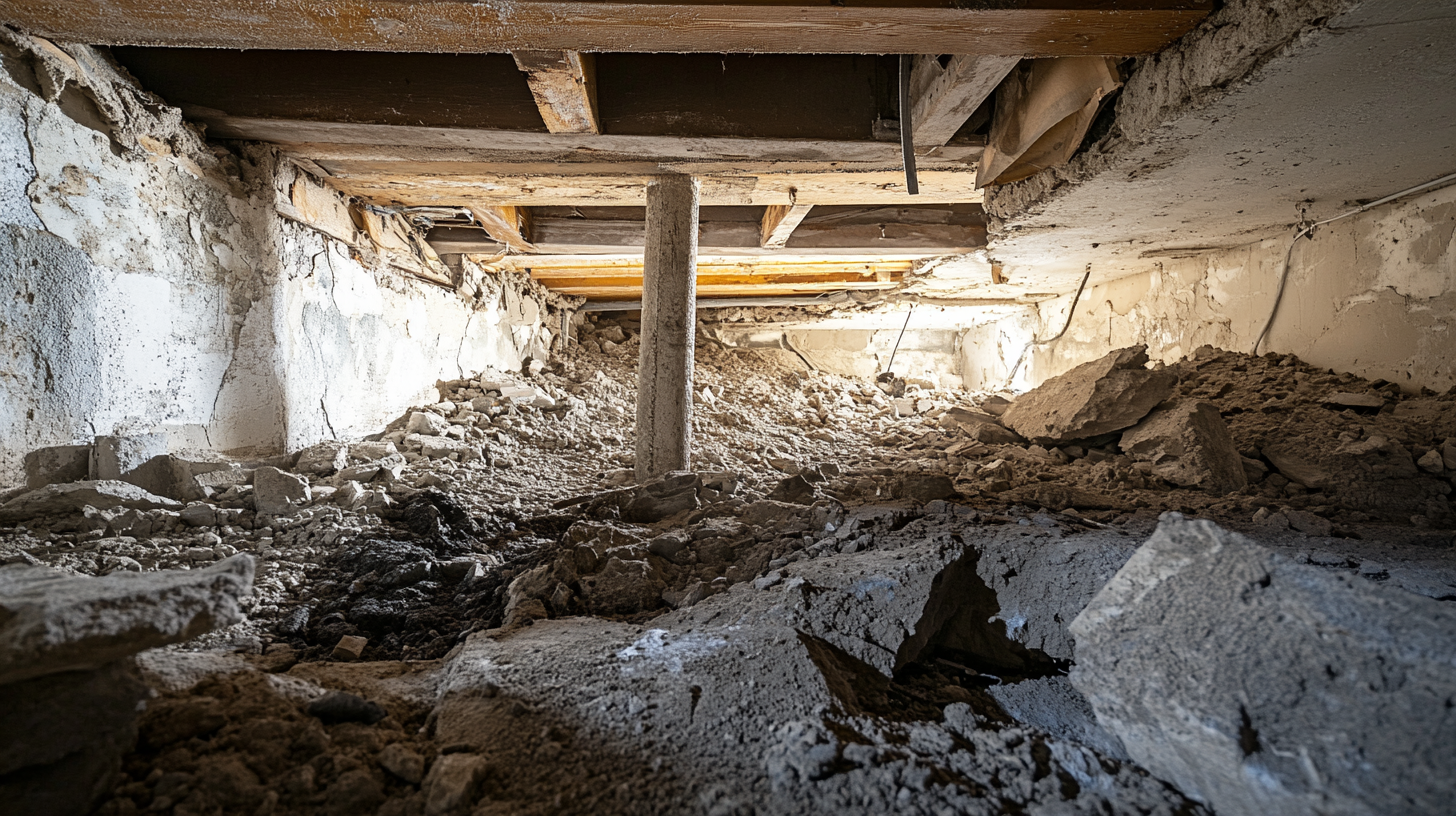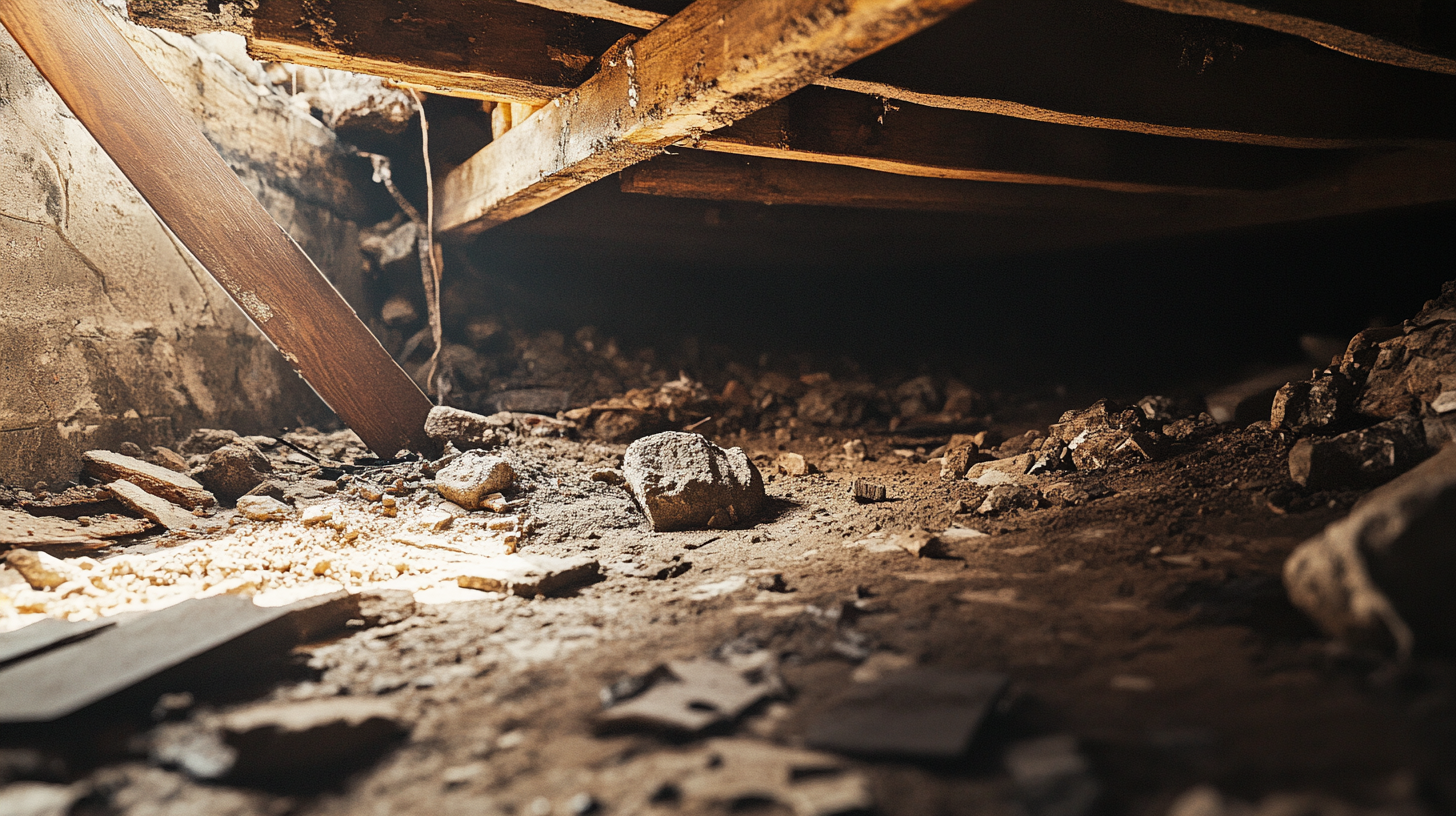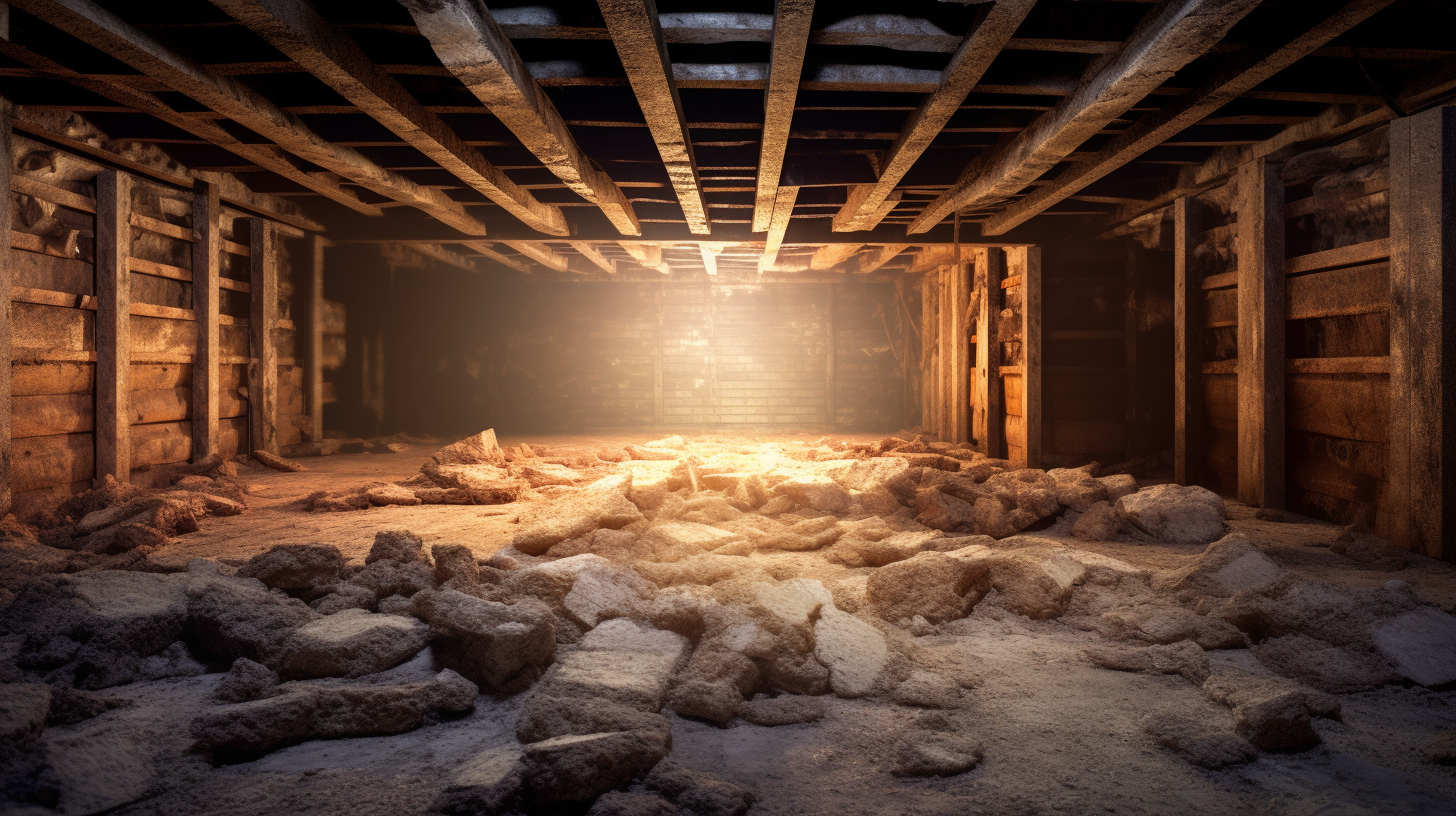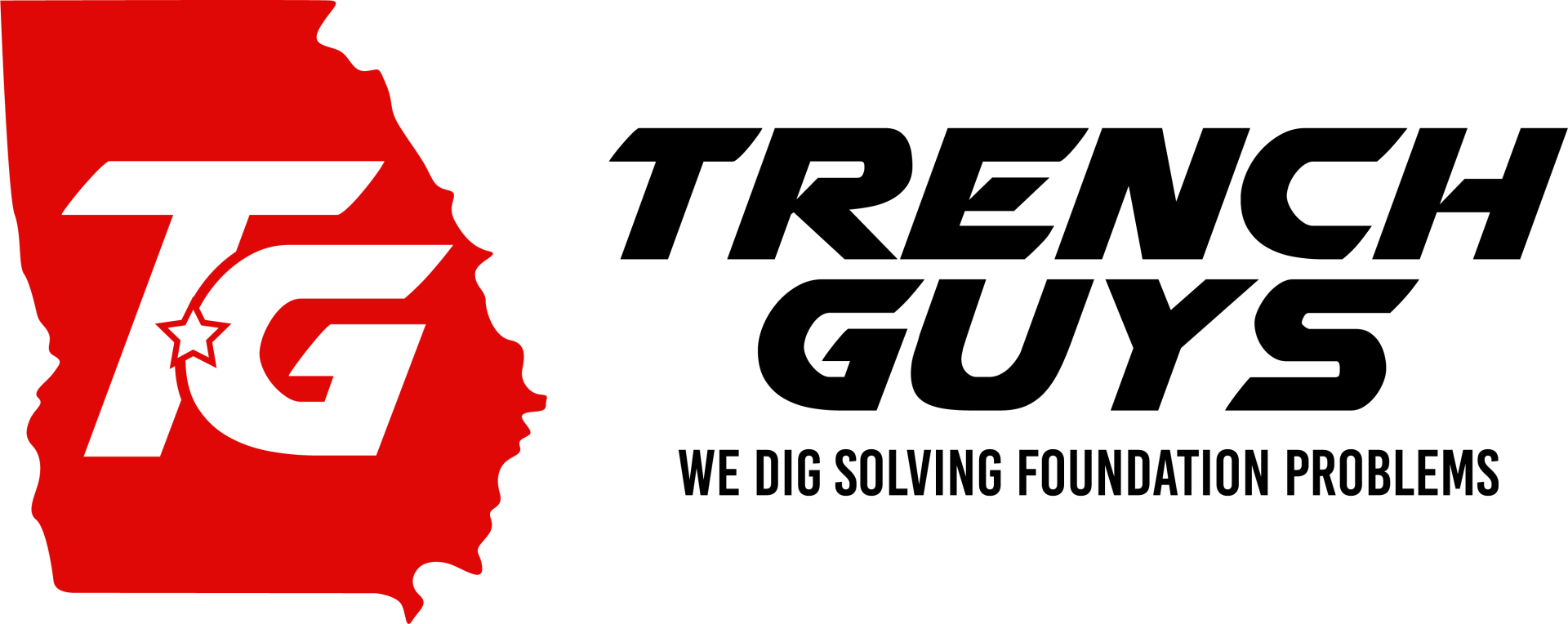In the quest for a healthier living environment, the quality of the air we breathe indoors takes center stage. While many homeowners focus on visible living spaces to improve air quality, the hidden areas beneath our feet—crawl spaces—play a pivotal yet often overlooked role in determining the air that circulates through our homes. This blog delves into the critical importance of crawl space ventilation, shedding light on its direct impact on indoor air quality and, by extension, our health and well-being.
Crawl spaces, the narrow voids left unoccupied between the ground and the first floor of many homes, can become reservoirs of moisture, mold, and mildew if not properly ventilated. These conditions not only threaten the structural integrity of our homes but also act as sources of indoor air pollutants. Proper ventilation of these spaces is crucial for mitigating these risks, ensuring that the air circulating within our homes is clean, fresh, and conducive to a healthy lifestyle.
This guide explores the mechanisms by which crawl space ventilation influences indoor air quality, from controlling humidity levels to preventing the accumulation of harmful gases. We'll uncover the science behind effective ventilation strategies, highlight the benefits of maintaining a well-ventilated crawl space, and provide actionable insights for homeowners looking to safeguard their indoor air quality through improved crawl space care.
Join us as we navigate the underappreciated world of crawl space ventilation, offering expertise and practical advice to help you enhance the air quality in your home. By the end of this journey, you'll understand why taking care of the air beneath your feet is a critical step toward ensuring the health and comfort of the air you breathe every day.
Understanding Crawl Space Ventilation
The crawl space, often hidden and overlooked, plays a vital role in the overall ventilation and air quality of our homes. Proper management of this space is crucial for maintaining a healthy living environment, preserving the structural integrity of the building, and enhancing energy efficiency. This guide delves into the significance of crawl space ventilation, outlining how crawl spaces contribute to home ventilation, identifying common issues that can arise, and highlighting the principles for ensuring effective ventilation.
The Role of Crawl Space in Home Ventilation
Contribution to Overall Home Ventilation:
Crawl spaces act as a critical juncture in a home's ventilation system. Properly ventilated crawl spaces allow for the exchange of air, which helps to regulate humidity levels and temperature within the home. This exchange is essential for diluting indoor pollutants, such as volatile organic compounds (VOCs), radon, and mold spores, contributing to healthier indoor air quality.
Common Issues Affecting Air Quality:
- Moisture Accumulation: One of the most prevalent issues in crawl spaces is excessive moisture, which can stem from ground evaporation, leaks, or condensation. This moisture creates an ideal environment for mold and mildew growth, which can deteriorate air quality.
- Inadequate Ventilation: Insufficient airflow can lead to stagnant air in the crawl space, compounding moisture issues and allowing pollutants to accumulate.
- Pest Infestations: Damp and poorly ventilated crawl spaces are attractive to pests, which can introduce allergens and other contaminants into the air.
Principles of Effective Crawl Space Ventilation
Importance of Airflow:
Ensuring adequate airflow through the crawl space is fundamental to effective ventilation. This can be achieved through the strategic placement of vents or the use of mechanical ventilation systems to encourage the movement of air, preventing the stagnation that contributes to moisture and pollutant buildup.
Moisture Control:
Controlling moisture levels within the crawl space is essential for preventing mold growth and wood rot. This can involve the installation of vapor barriers on the ground, proper grading around the home to direct water away, and the use of dehumidifiers to reduce humidity levels.
Temperature Regulation:
Maintaining a stable temperature in the crawl space can help to prevent the formation of condensation and contribute to the overall energy efficiency of the home. Insulation can play a key role in temperature regulation, alongside ventilation strategies that account for seasonal temperature variations.
Impact of Poor Crawl Space Ventilation on Indoor Air Quality
The crawl space, often hidden from daily view, plays a critical role in the overall air quality within our homes. Poor ventilation in this key area can lead to significant issues, affecting not only the structural integrity of the property but also the health and well-being of its inhabitants. This guide delves into the consequences of inadequate crawl space ventilation, focusing on moisture and mold growth and the accumulation of harmful gases, and underscores the importance of effective ventilation strategies.
Moisture and Mold Growth
How Excess Moisture Leads to Mold and Mildew:
Excess moisture in the crawl space, whether from external sources, condensation, or ground evaporation, creates an ideal environment for mold and mildew to thrive. These fungi prefer damp, dark, and poorly ventilated areas, making an inadequately ventilated crawl space a prime breeding ground. Over time, mold and mildew can spread to other parts of the home, further compromising air quality.
Health Risks Associated with Mold Spores in Indoor Air:
The presence of mold spores in indoor air poses significant health risks, particularly for individuals with allergies, asthma, or compromised immune systems. Exposure to mold spores can lead to respiratory issues, allergic reactions, and in severe cases, more serious health conditions. Ensuring proper ventilation in the crawl space is crucial for minimizing moisture and preventing mold growth, thereby protecting indoor air quality and resident health.
Accumulation of Harmful Gases
Potential for Radon, VOCs, and Other Harmful Gases:
Poorly ventilated crawl spaces can also become reservoirs for harmful gases, including radon, a naturally occurring radioactive gas, and volatile organic compounds (VOCs) emitted from building materials, furnishings, and household products. Without adequate ventilation, these gases can accumulate to dangerous levels, posing health risks to occupants.
The Role of Ventilation in Mitigating Gas Buildup:
Effective ventilation plays a vital role in mitigating the buildup of harmful gases in the crawl space and, by extension, throughout the home. By facilitating the exchange of indoor and outdoor air, proper ventilation dilutes and removes these gases, reducing their concentration and potential health impacts. In the case of radon, additional mitigation strategies may be necessary, but ventilation remains a key component of ensuring a safe indoor environment.
Benefits of Proper Crawl Space Ventilation
The crawl space might be out of sight, but its condition has a significant impact on the overall health of your home and its inhabitants. Proper ventilation in this critical area offers a multitude of benefits, from improving indoor air quality to safeguarding the structural integrity of your home and enhancing its energy efficiency. Understanding these benefits can help homeowners appreciate the importance of maintaining a well-ventilated crawl space.
Enhanced Air Quality and Health Benefits
Reduction in Allergens and Irritants:
Proper crawl space ventilation significantly reduces the presence of allergens such as mold spores, dust mites, and other irritants that can proliferate in damp, stagnant environments. By allowing fresh air to circulate and expel moist air, ventilation helps to keep these potential health hazards at bay, contributing to a cleaner and healthier indoor air environment.
Long-term Health Benefits of Improved Air Quality:
The long-term health benefits of improved air quality cannot be overstated. Consistently breathing cleaner air reduces the risk of respiratory conditions, allergic reactions, and other health issues associated with poor air quality. For individuals with pre-existing conditions like asthma or allergies, these benefits are even more pronounced, leading to an overall improvement in quality of life and well-being.
Structural Integrity and Energy Efficiency
Protection Against Structural Damage Due to Moisture:
Moisture is one of the greatest enemies of a home's structural integrity. Excess moisture can lead to wood rot, corrosion of foundation materials, and the proliferation of mold and mildew, all of which can compromise the strength and stability of your home. Proper ventilation in the crawl space helps to control moisture levels, protecting your home from these potentially costly damages.
Impact on Heating and Cooling Efficiency:
A well-ventilated crawl space also plays a crucial role in the overall energy efficiency of your home. By maintaining a more consistent temperature and reducing humidity levels, it can prevent the overworking of heating and cooling systems. This not only leads to more comfortable living conditions but also results in lower energy bills and a reduced environmental footprint.
Ventilation Solutions for Improved Indoor Air Quality
Ensuring optimal indoor air quality is essential for maintaining a healthy living environment. With various ventilation solutions available, homeowners can significantly enhance the air quality within their homes. This guide explores the differences between natural and mechanical ventilation systems, offering insights into their advantages and limitations, and provides an introduction to advanced ventilation technologies that can further improve indoor air quality.
Natural vs. Mechanical Ventilation
Pros and Cons of Each System:
- Natural Ventilation:Pros: Utilizes windows, doors, and vents to allow air flow naturally without the use of energy, promoting a cost-effective way to refresh indoor air. It also helps reduce the concentration of indoor pollutants.
- Cons: Limited control over air flow and temperature, potentially ineffective in extreme climates, and may introduce outdoor pollutants or allergens into the home.
- Mechanical Ventilation:Pros: Offers controlled and consistent air exchange regardless of outdoor conditions, can be integrated with filters to reduce indoor pollutants, and is effective in all climates.
- Cons: Requires energy to operate, leading to potential increases in utility bills, and may require regular maintenance.
How to Choose the Right System for Your Home:
Selecting between natural and mechanical ventilation depends on several factors, including your home's location, climate, and specific air quality needs. For homes in mild climates with low pollution levels, natural ventilation might suffice. However, for homes in areas with extreme weather conditions or high outdoor pollutant levels, mechanical ventilation systems offer more reliable air quality control.
Advanced Ventilation Technologies
Introduction to Dehumidifiers, Air Purifiers, and Smart Ventilation Systems:
- Dehumidifiers: Reduce humidity levels in your home, preventing mold growth and creating a more comfortable living environment.
- Air Purifiers: Remove pollutants, allergens, and particulate matter from indoor air, significantly improving air quality.
- Smart Ventilation Systems: Utilize sensors and automated controls to optimize air flow and quality based on real-time indoor conditions, integrating seamlessly with other smart home technologies.
Benefits of Integrating Advanced Solutions:
Incorporating advanced ventilation technologies can dramatically enhance indoor air quality. Dehumidifiers and air purifiers address specific air quality issues, such as high humidity and pollutant levels, while smart ventilation systems offer a comprehensive solution that adjusts ventilation rates for optimal air quality and energy efficiency. These technologies not only contribute to a healthier living environment but can also improve overall comfort and potentially reduce energy costs by optimizing ventilation based on actual needs.
Assessing and Improving Your Crawl Space Ventilation
Maintaining proper ventilation in your crawl space is crucial for preserving the health of your home and its inhabitants. Inadequate ventilation can lead to a host of issues, from poor air quality to structural damage. This guide will help you recognize the signs of insufficient ventilation and outline actionable steps to improve the airflow in your crawl space, ensuring a healthier and more durable living environment.
Signs of Inadequate Ventilation
Identifying Symptoms of Poor Air Quality and Moisture Issues:
- Musty Odors: A persistent musty smell emanating from the crawl space is often the first indicator of inadequate ventilation, signaling the presence of mold or mildew.
- Visible Mold Growth: Spots or patches of mold on crawl space surfaces indicate high moisture levels and poor air circulation.
- Increased Humidity: Excessive humidity in living areas above the crawl space can suggest that moist air is seeping into the home due to inadequate ventilation below.
- Condensation: Water droplets on pipes, insulation, or walls within the crawl space are clear signs of excessive moisture.
- Wood Rot: Soft, crumbling, or discolored wood in the crawl space structure indicates prolonged exposure to moisture, often due to poor ventilation.
When to Seek a Professional Assessment:
If you notice any of these signs, it's crucial to act promptly. While some ventilation issues can be addressed with DIY solutions, a professional assessment is recommended to accurately diagnose the problem, especially if there's significant mold growth, structural damage, or if the ventilation system requires a comprehensive overhaul.
Steps to Enhance Crawl Space Ventilation
Practical Tips for Improving Ventilation:
- Clear Vents: Ensure all existing vents are clear of obstructions such as debris, insulation, or stored items that can block airflow.
- Add Vents: If your crawl space has insufficient venting, consider adding more vents to facilitate better air circulation. Follow local building codes for the recommended vent-to-square footage ratio.
- Use Fans: Installing exhaust fans or vent fans can help actively move air through the crawl space, improving ventilation efficiency.
- Consider a Dehumidifier: For areas with high humidity, a dehumidifier can help control moisture levels, complementing your ventilation efforts.
Considerations for a Comprehensive Ventilation Overhaul:
- Evaluate Ventilation Options: Depending on the severity of the ventilation issues and the specific conditions of your crawl space, you may need to consider different ventilation strategies, such as mechanical ventilation systems or crawl space encapsulation.
- Insulation and Vapor Barriers: Proper insulation and the installation of a vapor barrier on the crawl space floor can significantly reduce moisture evaporation from the ground, enhancing the effectiveness of your ventilation system.
- Professional Installation: For complex solutions like encapsulation or the installation of mechanical ventilation systems, professional installation ensures that the job is done correctly and complies with all relevant building codes.
FAQs
Contact Trench Guys Today!
Trench Guys will do everything we can to ensure your experience with us is excellent.
Request A FREE Estimate
Request a Free Estimate Form
Checkout Recent Post




Got a Question? We’re Here to Help.
You can arrange an appointment or make an enquiry by phone or email, orget in touch to us via our contact form.



